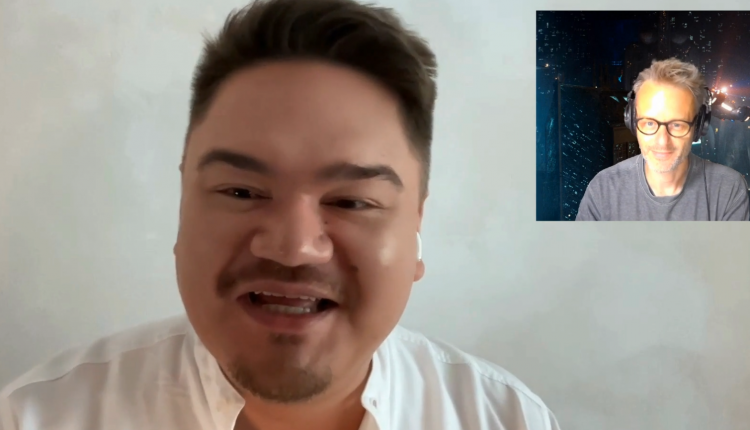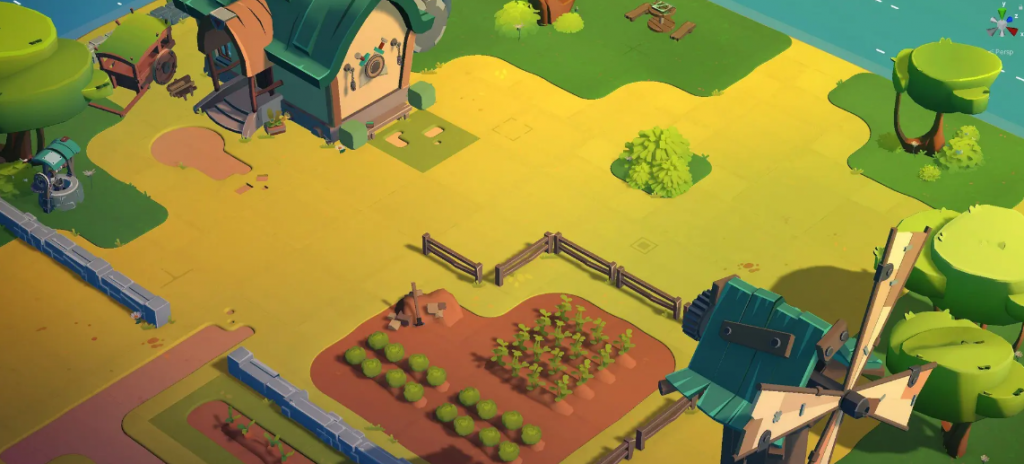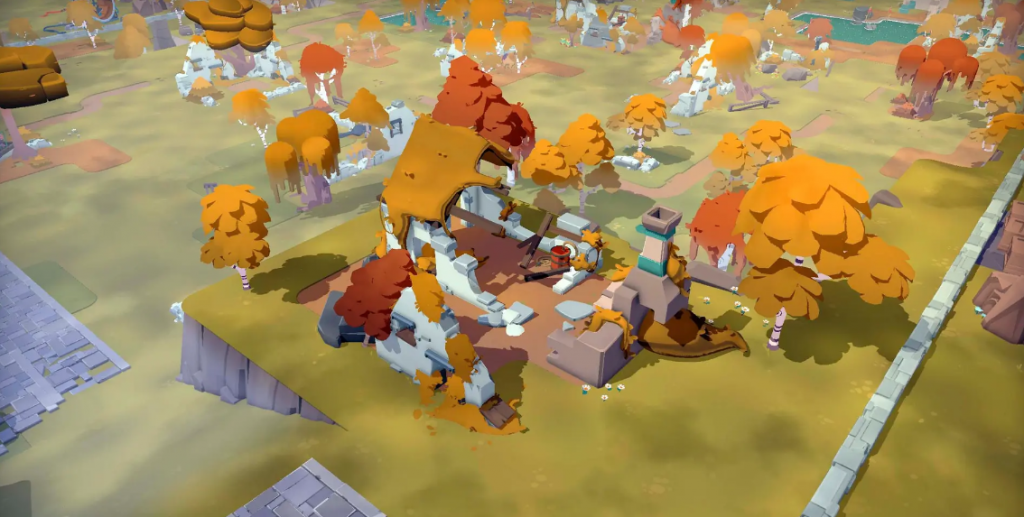No wallet, just stream: Ember Sword’s mass market plan

Don’t miss out on any daily news from the blockchain games space: sign up to our Substack, follow us on Twitter and connect with us on Linkedin.
In the latest episode of his Blockchain Gaming World podcast, editor-in-chief Jon Jordan talks to Bright Star Studios’ CEO Mark Laursen about how his history in gaming has shaped the vision and technology for in-development MMORPG Ember Sword.
This transcription has been edited for length and clarity.
BlockchainGamer.biz: Can you give us some background about your career so far?
Mark Laursen: I’ve been playing with computers since the TI-99 then Commodore 64, Amiga, you know, all the consoles, the rise of the mobile phones and everything else. I have an engineering background, but fell into playing games. I played in a Counter-Strike team – a Danish team called Spirit of Amiga – when I was younger. After that I fell into playing World of Warcraft, which is where I got many ideas for today from. I helped create two number one teams. We were world champions for a really long time; two years and three months, undefeated.
After that I got into thinking I should start making games again. So I created a bunch of different games, had a bunch of releases on Steam, some medieval games, fighting games, also had a stint in browser games, made a couple of engines along the way, both for web and for desktop. So it’s been all over the place but I learned a lot from it.
Before Ember Sword, you were working on browser games and that’s something you’ve also been doing in terms of its streaming engine.
We were trying to build engines so you could stream in large worlds because one of the limitations of a lot of these engines is you can’t make big, live worlds so you end up creating games that aren’t big and beautiful. I see the browser as a terminal, so if you’ve got the infrastructure, you can load everything up and just stream it in continuously. You don’t even need an OS. Why do you need an operating system? Because we just load up the browser directly and then stream in. I think that’s where we’re going in the future.
So from these learnings that’s where the idea came for Ember Sword where you should be able to get into a game without having to register anything, just typing the name, get in there and play, because why have barriers to entry? You don’t need a wallet to play. If you want to go advanced and use some of these features, then you can. That’s up to you.
Actually, when we started out, we were working with a big engine company who was working on a more sleek version of the engine but in late 2022 they said ‘We can’t do this. You’re on your own’. Then we had to decide either to make the game a downloadable desktop game – which we didn’t really want to – so we thought, let’s make our own engine. So we did and now it’s working quite well. It’s way faster than pretty much any other engine and can facilitate pretty much any game in the browser.
For example, the engine itself is around 3.5 MB and Ember Sword is about 30 MB so we’re really, really good at compressing things and making them super small and efficient. That means Ember Sword can run on any device, anyone in the world. It’ll open in about 10 seconds. We want to send a guy to Antarctica to show that it actually works anywhere as long as you have a 3G+ connection.
The cool thing is that the engine will only stream what you need so if you’re walking, it’ll just stream what’s around you. But it’s not cloud gaming, it’s instant gaming, which means you’re streaming the actual content as opposed to cloud gaming where you’re putting an input on your keyboard, that input is sent to a data center which renders the video and sends it back to you. That’s super slow, super laggy. You can’t really be competitive with it, so that’s what we want to eliminate. And we have some super, super good engineers to do it.
Presumably that really helps in terms of your global distribution potential?
Yes. One of those previous browser sites I worked with had 28 million users. It’s a good way to funnel users into your project, which is why I believe hard in this. We can do LATAM, APAC, all these regions where you can’t have these games because players have to download 150 GB and have a good PC. With our tech, you only need a mid-to-low computer and it will run really well.
Let’s talk about Ember Sword now. What was the inspiration?
When I was playing World of Warcraft, you’d have items being sold for hundreds of thousand of dollars and then people would get banned. So the idea is if people are doing it on the blockchain, it would be transparent and it wouldn’t be possible to cheat.

But more than that in Warcraft, some of the cities never changed. You could play it for decades and it was the same blacksmith, the same NPCs, the same things going on all the time. We thought it would be a great idea to let the players own these places. So people own land, they cultivate land and if you want a premium shop, you place it on your land so we’re funneling everything into the land owners and everybody who’s a part of the world.
What’s the point of owning land in the game?
You don’t need land to play. You don’t need anything to play the game. Just go in and play. You don’t need a wallet. You don’t need to take anything into consideration. Just go in and play and try it out. That’s what we like about it, no barriers, essentially. So land is more about if you’re looking to be a part of the game world to facilitate these different things. You can place resources, you can be available for quests, you can place premium shops, and of course you get a title and get some other cool things, but there’s no pay-to-win. It’s basically vanity items. We’re going hard on cosmetics like skins.
These can be found through events like PVP or PVE and then if you want to trade them, you go to a piece of land, you open up like an auction house or marketplace and you trade it with other users. There’s a small fee that we split not just with the local landowners and the person who owns the piece of land, but the global pool gets to share as well. So the idea is it’s going to go back to the community.
You have a different approach to selling your land NFTs. Can you explain that?
We looked at what other projects were doing and saw people who just wanted to flip and make money right away, using bots. We wanted to figure out a way of stopping that and thought it would be good to have applications where people had to explain why they wanted NFTs. The result is we have a high degree of gamers, gaming guilds, organizations, esports organizations that want to come in and build cool experiences for everybody to play and I think that’s really important.
For this land sale, wave one applications are already closed. It’s definitely going to sell out. Wave two starts of 31st July, which is open to anybody, more free form.
Checking all these applications must be a big overhead?
Last time we had to hire an external company to look through it and it took a couple of weeks.
So yeah, it is a lot of extra work, but I feel like we want to do this, we want to do this right. That’s also why we haven’t sold everything. We could have sold everything but that feels disingenuous. We want to manage expectations, to show we’re not here for a cash grab.
In terms of the game, you had an open test recently so what stage are you in development?
Yes, in April we had around 14,000 play sessions, with 92% of players saying they would recommend Ember Sword to a friend. We had a lot of early holders there so when you hold land or a badge, you have a chance to give us feedback, you have a chance to participate in development, because these are the people that are going to run the game later.
We learned a lot and have a lot of changes coming in, like movement, all these different things that are coming in. We’re looking to do more tests, a closed beta by the end of the year. After that, we’re going to gradually open up again to more and more players until it goes into full release.
We also have a dungeon coming out for people to try, to see how some of the features work, the NPCs and the dynamic systems. We want content to be fresh, which means that it will always change.
How have you found the past couple of years in terms of running a blockchain game company?
Yes, we’re approaching 80 people now. It’s been a gradual rise. But it’s been quite tough – Covid, FTX and all the bad actors – navigating that is incredibly draining.

But I believe in the project, I believe in the people we have. Of course, you have to make some tough choices along the way, but that’s what you have to do with any sort of company. With any new tech, there’s always kinks that need to be worked out. But if you scale sustainably and make the right decisions for the community, I think that everything will be good.
Do you think blockchain games are finally gaining some acceptance?
First of all, I think it’s about the user experience. If you’re asking for people to connect a wallet right away that’s a huge mistake. You’re going to lose most of your potential players right away. We need to create projects that ease people in. We need to stop putting blockchain front and center.
Eventually as we get more and more blockchain products out there that are good, that are doing it in the right way, the sentiment will automatically change. With any sort of new technology, we always underestimate the enormous impact that it will have.
Find out more at the Ember Sword website.
